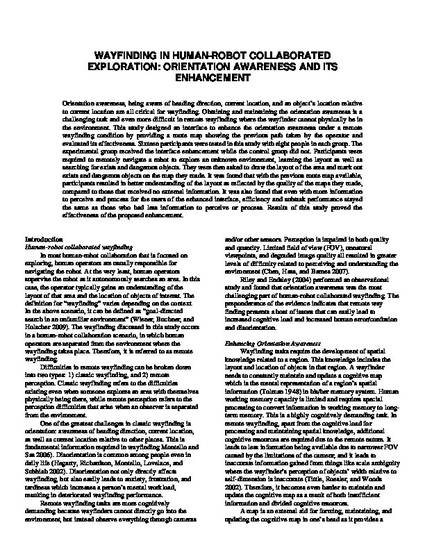
Orientation awareness, being aware of heading direction, current location, and an object’s location relative to current location are all critical for wayfinding. Obtaining and maintaining the orientation awareness is a challenging task and even more difficult in remote wayfinding where the wayfinder cannot physically be in the environment. This study designed an interface to enhance the orientation awareness under a remote wayfinding condition by providing a route map showing the previous path taken by the operator and evaluated its effectiveness. Sixteen participants were tested in this study with eight people in each group. The experimental group received the interface enhancement while the control group did not. Participants were required to remotely navigate a robot to explore an unknown environment, learning the layout as well as searching for exists and dangerous objects. They were then asked to draw the layout of the area and mark out exists and dangerous objects on the map they made. It was found that with the previous route map available, participants resulted in better understanding of the layout as reflected by the quality of the maps they made, compared to those that received no external information. It was also found that even with more information to perceive and process for the users of the enhanced interface, efficiency and subtask performance stayed the same as those who had less information to perceive or process. Results of this study proved the effectiveness of the proposed enhancement.
Available at: http://works.bepress.com/richard_stone/19/

This is a manuscript of a proceeding published as Stone, Richard T., Peihan Zhong, and Thomas Schnieders. 2017. "Human-Robot Collaborated Exploration and Wayfinding: Orientation Awareness and its Enhancement." In Proceedings of the Human Factors and Ergonomics Society Annual Meeting, Austin, TX, October 9–13, 2017, vol. 61, no. 1, pp. 1257-1261. DOI: 10.1177/1541931213601795. Posted with permission.